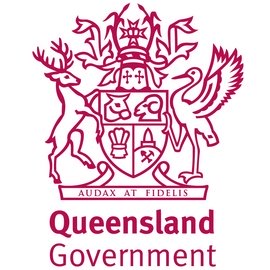Several policy ideas have already been canvassed in the lead up to the meeting, which will bring principals, teachers and education experts together with education ministers.
These ideas include a plan to employ student teachers in schools as ‘paraprofessionals’ while they complete their university study. The NSW Education minister, Sarah Mitchell, suggested that “Giving students earlier access to schools during their training will make them better teachers”. But will it?
There are at least two problems with this idea. First is the notion that student teachers are not already in schools as part of their training, second is that this is a bad plan for producing “better” teachers.
Suggestions like this appear to rely on the notion that to get a new cohort of expert teachers is as simple as getting more people into classrooms. The proposal rests on the misconception that just because we’ve all been in a classroom ourselves, learning how to be a teacher can’t be all that hard.
It’s possible that only people who have trained and worked as teachers know how false this perception is – especially in the early years of teaching. Learning to teach well is difficult. New teachers do not simply appear in classrooms fully formed. Like any other profession, students need training and time to learn before they are launched into classrooms.
While this plan is at least a first attempt at working towards filling the gaps left in schools by the national shortage of teachers, it is not a strategy that will support better training opportunities, nor produce better teachers.
Furthermore, placing groups of first-year initial teacher education (ITE) students in schools may add yet another administrative burden on an already overburdened teaching workforce.
Secondly, the claim that student teachers do not have in-school experiences until years into their university courses is demonstrably false.
Many universities have moved towards including mandatory professional experience placements for their student teachers in the second, and sometimes first years of their education degrees.
Indeed, the first week of my own Bachelor of Education, 20 years ago, comprised a one-week observational practicum, followed by a six-week teaching placement in Term 2 of the first year.
Changes to teacher accreditation requirements this year in NSW and other states have also meant that final-year education students can already obtain accreditation to work as classroom teachers while concurrently completing their university course requirements.
Many are taking up this option and working as teachers alongside their university study. For new teachers this is a huge undertaking, considering the considerable course work requirements, and the planning, teaching, assessment, reporting and myriad other responsibilities of classroom teachers.
Whether these beginning teachers have access to the mentorship and support they need is unclear.
The NSW Education Minister suggesting this strategy also betrays a lack of understanding of her own government’s teacher accreditation body, the NSW Education Standards Authority (NESA).
Even if reams of new and enthusiastic ITE students suddenly appeared in schools as paraprofessional classroom workers, how these staff would fit with the current accreditation requirements for teachers hasn’t been canvassed.
Would these students be left alone to work with classes? Quite probably, given that many schools are struggling to attract casual teachers. New people in a school would be a great resource to supervise unstaffed classrooms, but not a great strategy for training and retaining new teachers.
Furthermore, if some of these student teachers did happen to ‘learn on the job’ and make excellent teachers without having completed university courses, what would this mean for accreditation requirements which mandate four-year degrees, or a two-year Masters for graduate entrants?
If governments want to make it easier and faster for professionals from other industries to retrain as teachers, they need to reconsider pathways into teaching that aren’t simply aimed at getting people into schools.
The one-year Graduate Diploma of Education, for example, was canned in all Australian jurisdictions a decade ago, notwithstanding that many current senior teachers and school leaders were effectively trained in these courses.
If ITE students are welcomed into schools, why not professionals with one additional year of intensive training?
Providing that ITE students working in classrooms are adequately paid, and schools have the capacity to support them (neither of which are guaranteed), this plan could work to encourage more practical experience for beginning teachers.
But if other aspects of the schooling system do not change, this strategy will simply end in increasing numbers of students starting teacher training only to give up the profession within a couple of years.
Putting inexperienced student teachers into schools doesn’t do anything to resolve the teacher shortage. It simply takes the focus off the parts of the system which are failing, but that governments evidently don’t want to fix.














